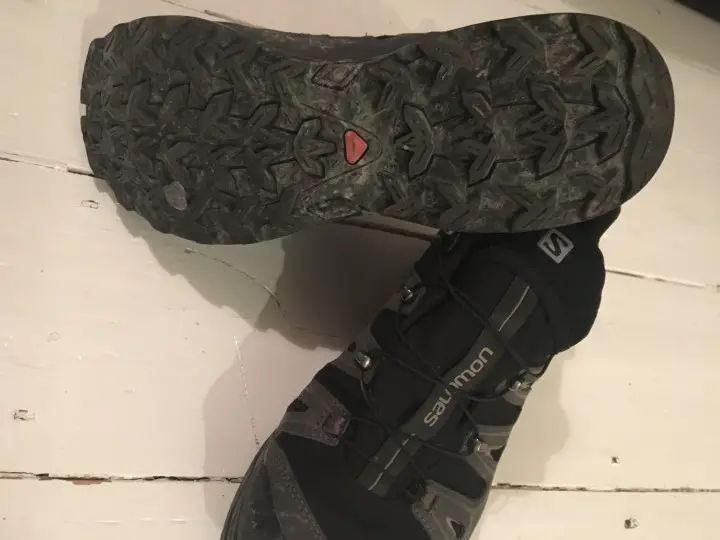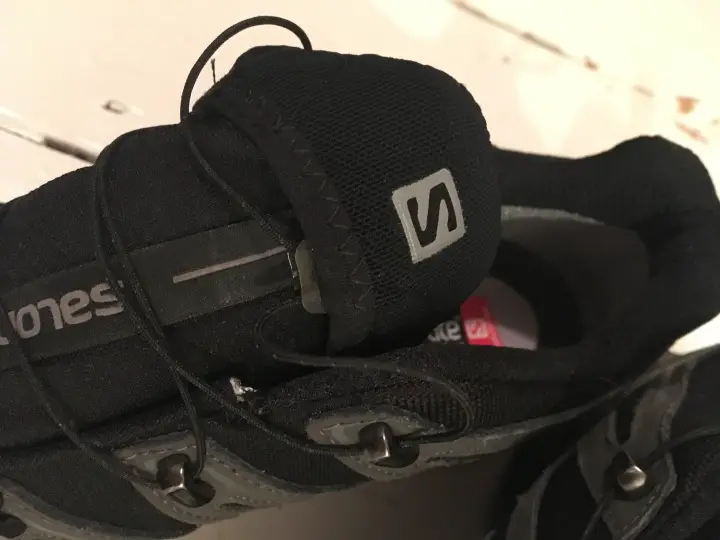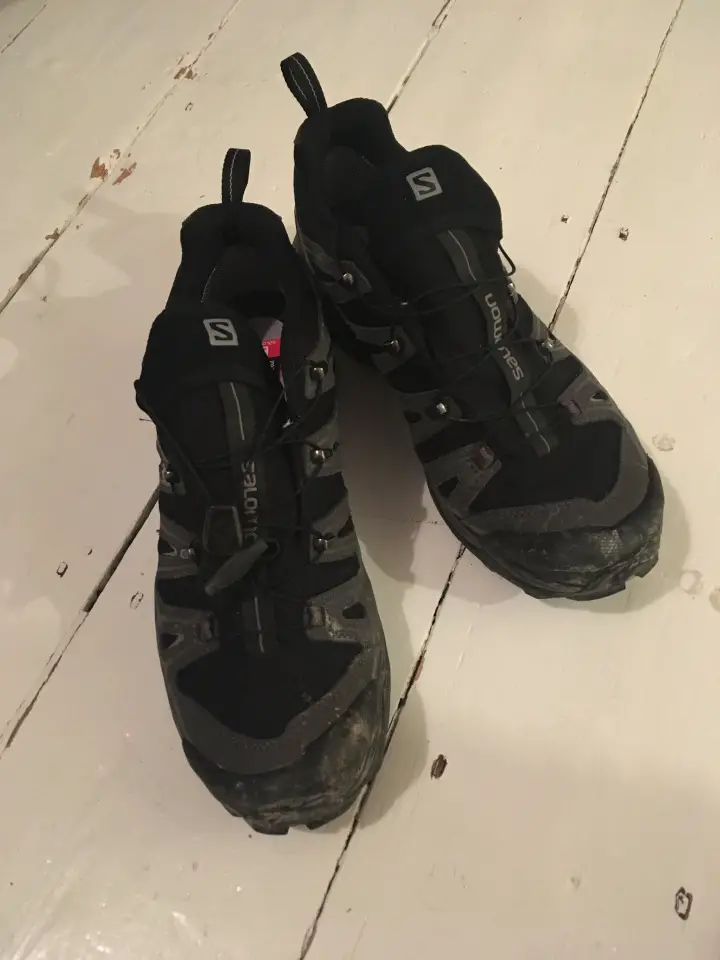Salomon X Ultra 2 GTX shoes review
I’ve tended to hike in the past in some kind of reasonably heavy boot. The Presidential Traverse I did in a pair of Haix goretex boots with 8 inch high ankles and a fairly rigid construction. They are pretty bombproof and give great ankle support (or at least the impression of it) which was comforting when hopping over rocks. However, they are also heavy, 2.2kg for the pair, and weight on the feet makes way more difference than weight on the back.
Increasingly, serious hikers are moving away from this kind of old-fashioned big clunky leather boot. Partly it’s because materials are getting better, and you can have waterproofing, breathability and support in a smaller and lighter package. Partly it’s because packs are also getting lighter, and so the need for ankle support is reduced. Partly it’s a change in philosophy, to being safe by being light and mobile, not by carrying the world on your shoulders. And partly it’s an understanding that having rigid boots around your ankle doesn’t actually necessarily make you any less likely to get injured.
Personally, I am a little undecided as to what camp I sit in. On the one hand I am a long-distance runner and trail runner, used to leaping nimbly (hah) over uneven ground in lightweight trainers or trail running shoes, and very much value being fast and light. On the other hand, much of my background in outdoors activities and hiking comes from a culture where big boots and heavy packs are the norm, and that is unlikely to change.
Anyway, for the hike up Snowdon I decided it was finally time to get something a bit more modern, and after a lot of debate and back and forth I plumped for the Salomon X Ultra 2 GTX (low rise, Goretex hiking shoes).

They are available in mid-rise and full boot versions, and Isaac (who has the mid-rises) will add his own thoughts at some point.
The shoes are developed from trail-running shoes, and are shaped much like trainers, but adapted for hiking with a robust sole including a chunky heel, toe protection, a widened ‘mudguard’ area around the edge, and serious grip.
Like many of Salomon’s shoes, they feature the quick-lace system which uses a drawstring type arrangement rather than conventional laces, and features a pocket on the tongue so it can be tucked away. It doesn’t make a huge difference, but it is nice to be able to quickly get the whole shoe tight and for it to stay secure all day, and to easily loosen or tighten it if your feet adjust during the day, or swell as you get warm.

The feel is much more like wearing trainers, of course, and this is most noticeable in the fact that you can put them on for the first time on the day you plan to walk up a mountain, and not suffer any discomfort at all. That is certainly not recommended for leather boots, which usually require serious breaking-in time first. I found them incredibly comfortable for the Snowdon hike; warm even when it got cold, always breathable, and above all light. I hardly noticed they were there, and I certainly didn’t miss the lack of ankle support as I thought I might. In many respects, for scrambling up rocks they were much better than chunky boots, and the level of grip is as good as or better than my Haix.

They didn’t have to put up with serious mud or water, and although they are waterproof they’re obviously limited by the height of the ankle. For the Snowdon hike, however, which was mostly dry and over rock or paved paths, these lightweight and incredibly comfortable shoes were absolutely ideal.




